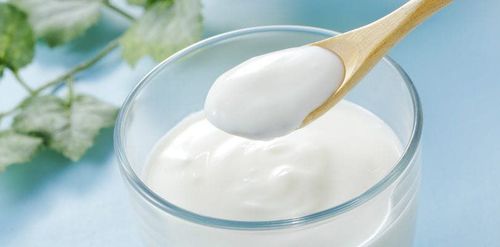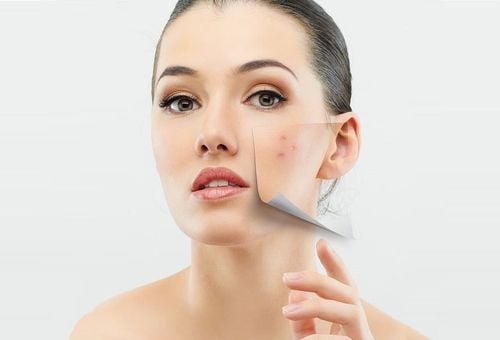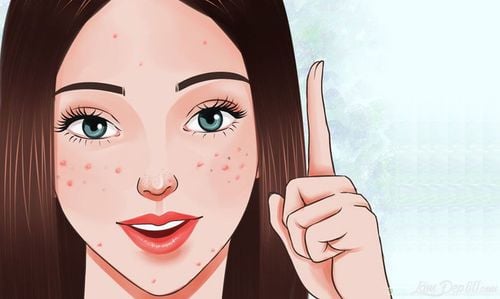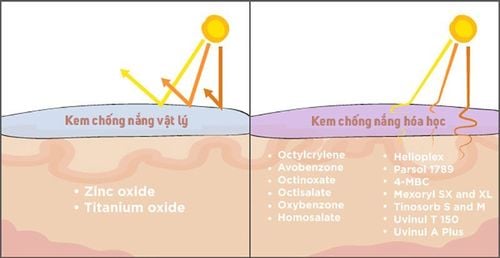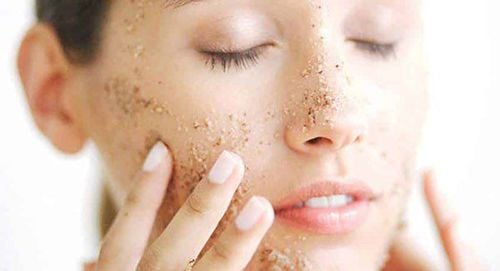This is an automatically translated article.
Skin is a very important organ that helps protect the body from external agents. Besides, owning a beautiful skin will help you to be more confident. Building the right skin care process will help the skin to be firm, healthy, even-toned and effectively anti-aging.1. Basic skin care steps
1.1 Know your skin type Before starting any skin care routine, you need to know what your skin type is. From there, you can choose the right method and product to achieve high efficiency. Skin types include:Dry skin is low-oily skin that is flaky, scaly or rough. Skin is shiny, greasy, and may have large pores. Combination skin is a combination of both dry and oily areas. Sensitive skin is skin that may sting, itch, or burn after using certain makeup or other products. Normal skin is the type of skin that is always balanced and not sensitive. SEE ALSO: Skin Types and Care: Normal - Dry - Oily - Combination - Sensitive
1.2 Skin Cleansing Cleansing is the first step that cannot be skipped, however it depends on each skin type to have different cleaning methods such as:
Normal/Combination Skin Cleansing: Normal and combination skin types are very easy to care for. Therefore, you should choose the right cleanser, use your fingertips to apply a gentle cleanser or soap. Do not rub too hard on your face, but wash your skin with warm water that is not too hot, then pat dry. If your skin is dry or oily, try a different cleanser. Clean dry skin: For dry skin types, use a gentle cleanser that doesn't contain alcohol or fragrances, as these ingredients can make skin drier. Gently massage then rinse with warm water. Accordingly, you should also not use hot water because it will strip away the natural oils on your face faster and make your skin drier. You can try exfoliating once a week to get rid of flaky skin cells. This will make the skin look brighter and more even.

Mỗi loại da cần có cách và sản phẩm làm sạch khác nhau
1.4 Apply Sunscreen Your moisturizer probably already has sunscreen in it. However, you should also use separate protection, because the sun can damage your skin in as little as 15 minutes. Choose a sunscreen that offers broad-spectrum skin protection, with an SPF of at least 30. Apply sunscreen daily, even when it's not sunny and even when it's cold, and reapply every 2 clock hours.
MORE: Basic skin care steps you need to know

Bôi kem chống nắng là bước không thể thiếu trong quá trình chăm sóc da
2. Some notes in the process of skin care at home
2.1 When should you wash your face? You can get dry skin from washing your face too much, so most people wash their face twice a day. In the morning, wash your face with warm water and pat dry with a soft towel. In the evening before bed, wash your face with a mild cleanser or soap to remove the day's dirt and makeup. If you exercise or play sports, you can wash your face afterwards with a gentle cleanser. Because sweat can clog pores and make acne worse.2.2 No makeup at bedtime When you're tired, you might want to go to bed without washing your face. But leaving makeup on while you sleep can clog pores and cause breakouts. So, clean with a makeup remover or a gentle cleanser. If you use acne medication, this is the right time to apply it when your face is clean and free of makeup.
Besides, choose the right cosmetics for your skin. Products that say "nonacnegenic" or "noncomedogenic" on the label are less likely to cause breakouts or clog pores. Look for water-based, oil-free makeup, and get rid of expired makeup. You should also not share makeup or makeup tools. Use a new cotton pad when you want to try on makeup at the store. If you already have an eye infection, buy new makeup so you don't re-infect yourself. Finally, you shouldn't wear makeup in the car or on the bus, either, because a single hit can scratch your eyes or get makeup and bacteria on your face.
2.3 How to take care of your skin during acne Having too much sebum and dead skin cells can clog pores and provide a suitable environment for bacteria to grow inside. Germs thrive and breakouts can appear as whiteheads, blackheads, and pimples.
When you have acne on your face, you should not try to squeeze it out because that can lead to infection and scarring. Instead, try using acne products that come in the form of lotions, creams, and gels. Follow the acne skin care instructions carefully. If you abuse them too much or too often, they can irritate your skin and backfire causing more breakouts. If your acne is really severe, go to the dermatology clinic for appropriate treatment.

Đừng nên cố nặn mụn bởi việc đó có thể khiến bạn bị nhiễm trùng và để lại sẹo mụn
2.4 Get rid of bad skin habits Try to avoid habits that can cause breakouts, redness, and scarring. Absolutely do not scratch the skin, especially pimples. Keep hairspray and gel away from your face, because they can clog pores. Do not wear a headband or a beanie that is too tight, as this can irritate the skin of the forehead. Do not smoke as it can prematurely age the skin and turn yellow and dry.
Keep your skin healthy by maintaining a healthy diet. Increase intake of green vegetables, fruits and whole grains in meals. Choose foods with lean protein like fish, chicken, lean pork, beans, and eggs. Avoid foods high in cholesterol, trans fats, saturated fats, salt, and sugar. Get enough sleep to avoid dark circles, wrinkles, dull skin and other side effects of a bad rest regimen. Always keep yourself in a comfortable, relaxing and stress-reducing mood. Especially drink enough water every day to have a healthy skin.
Skin care is very necessary to own a healthy, firm skin and make you more confident. The basic skin care steps are the same. However, you need to choose the right skin care methods and products for your skin to get the best results.
Please dial HOTLINE for more information or register for an appointment HERE. Download MyVinmec app to make appointments faster and to manage your bookings easily.
Reference source: webmd.com



